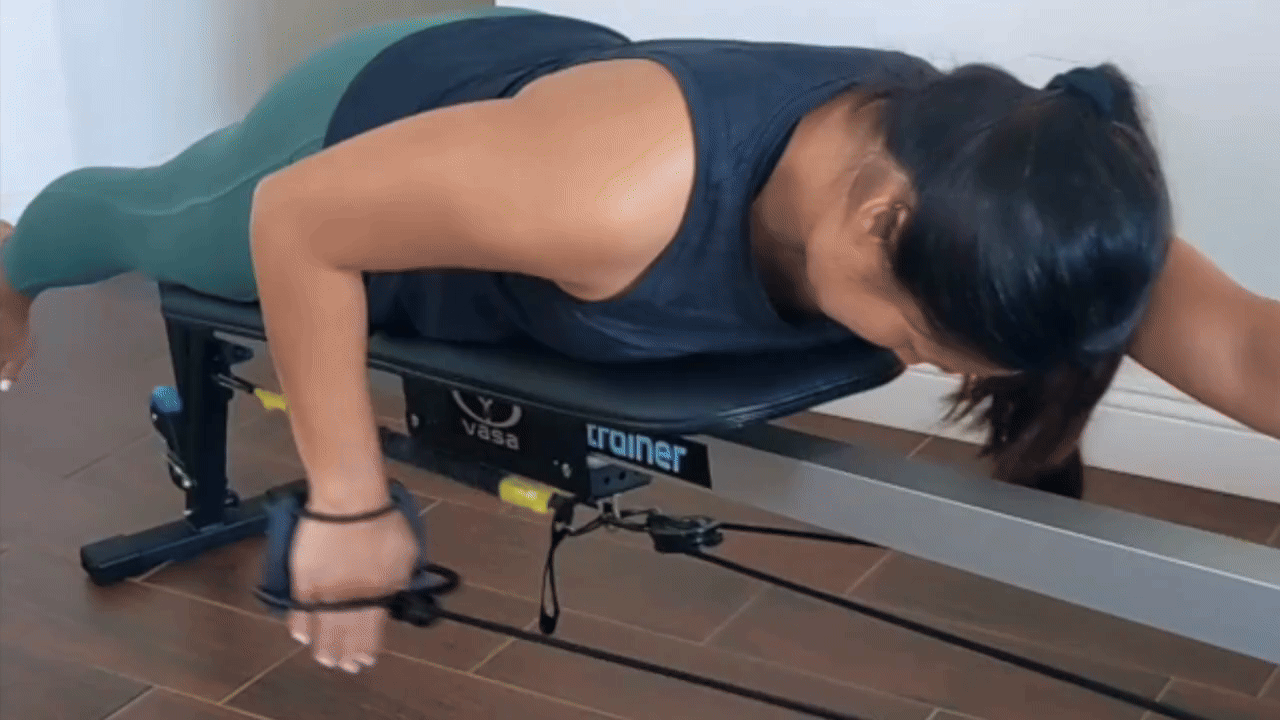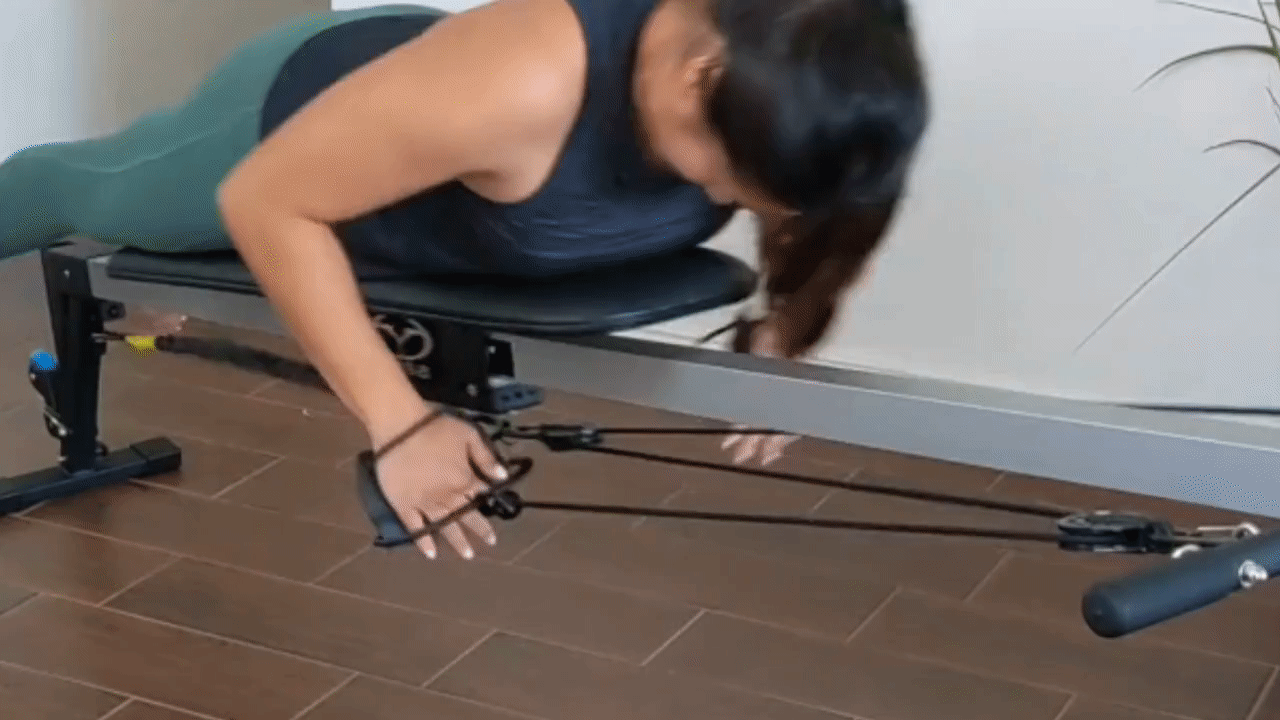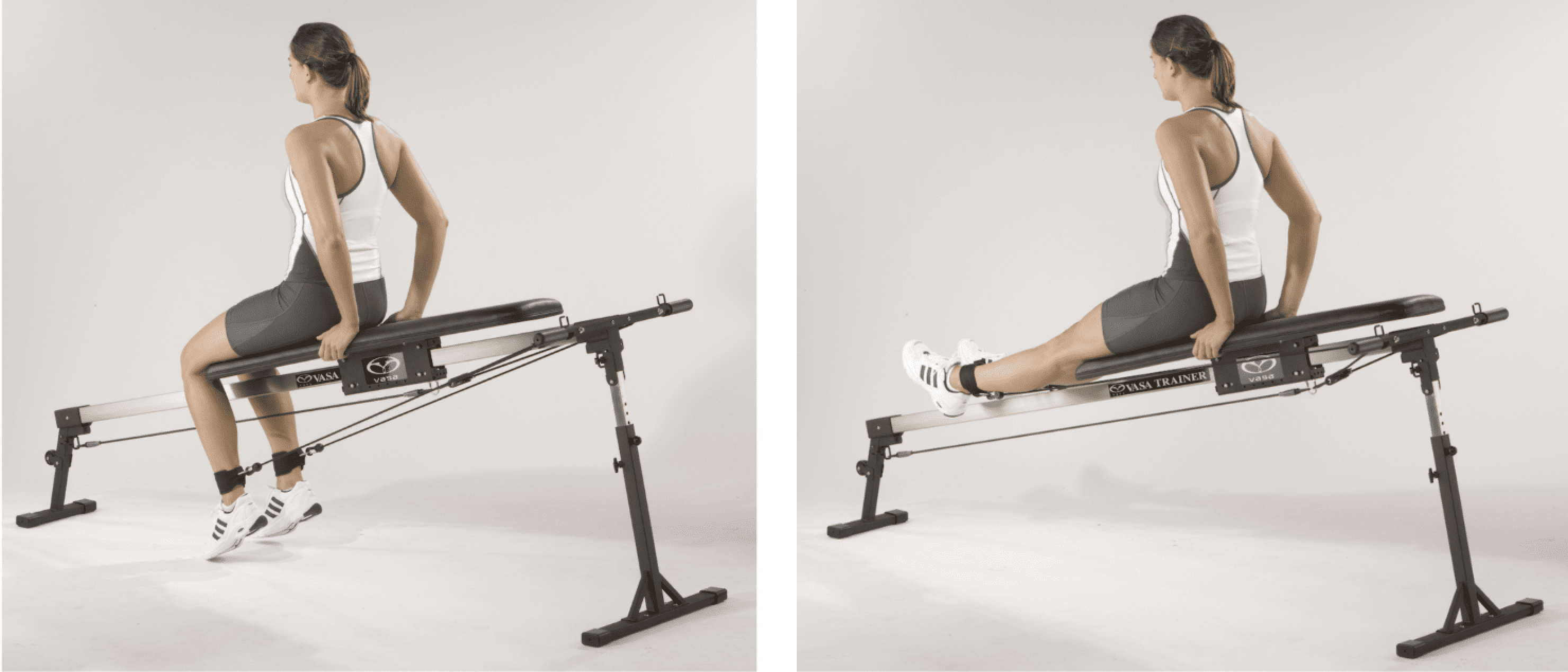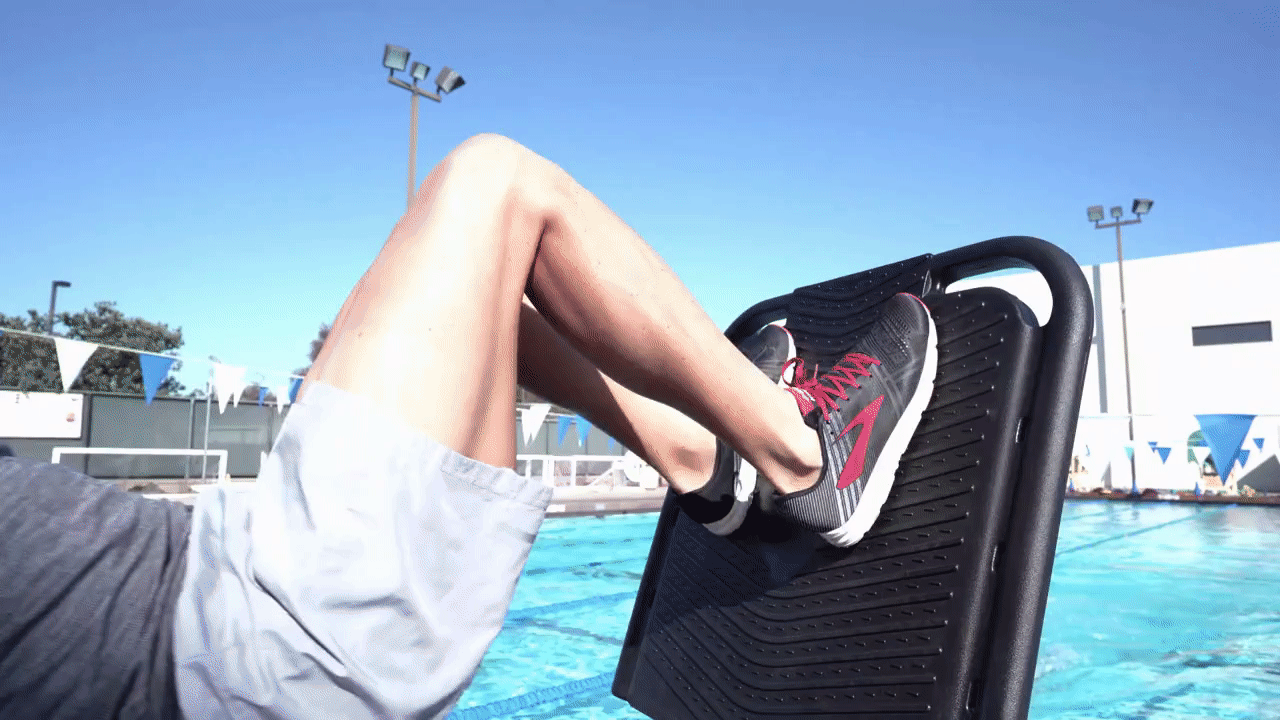Author: Sandra Harrell, DPT
When most people think of competitive swimming, they focus on the type of training necessary in the pool. While pool training is necessary, simply swimming laps may not yield the best results, especially if you are a competitive Masters swimmer.
Despite decades of swimming coaches reiterating that we all need more distance (volume of yards or meters) to improve our stroke-specific strength and endurance in the pool to swim fast, updated science revolving around swimming now states otherwise. Contrary to prior beliefs and training philosophies, science now reveals that solely swimming every practice may not improve power, stroke-specific strength, and speed.
While I am not saying that distance doesn’t matter (it does), there is more to training when it comes to competitive swimming than just swimming.

In our sport, many swimming programs and swim coaches focus a significant amount of program development toward various training principles done in the pool. Due to this, the swimming world has seen phenomenal swims and new Masters swimming records set. However, I continue seeing many Masters’ swimming programs focusing solely on pool training with little emphasis on what can be done outside the pool. While Masters swimmers may have excellent aerobic capacity in the pool, that alone does not necessarily translate to fast swimming.
Stroke-Specific Strength Training
Within the last couple of decades, more and more research has revealed that strength training is integral to faster competitive swimming. Swimmers and coaches know the numerous benefits of integrating a strength program as a critical component of successful swimming programs. Such benefits include, and not limited to, improved muscular strength and endurance, improved body composition, increased lean muscle mass, improved bone density, and reduced risks of sustaining repetitive stress injuries.
For Masters swimmers, these benefits extend beyond improved performance, as all aforementioned benefits are crucial for healthy aging and embracing healthy lifestyles.
With new light shed on how stroke-specific strength training positively impacts swimming performance, many swimmers are still determining where to begin when it comes to incorporating a strength program into their training regiment. For some, including strength training at a gym may be viable. However, consistently going to the gym may not always be feasible for others. Incorporating a Vasa Trainer for dryland training can benefit those wanting to integrate a strength program at home.
So, what is a Vasa Trainer?
The Vasa Trainer is a swim training bench aimed to maximize stroke-specific, full-body strength while allowing you to focus on improving your technique. Unlike other swim training benches in the market, the Vasa Trainer is a highly versatile swim training bench with various attachments and features that enable you not only to train and strengthen your shoulders, as that tends to be what most swim training benches do, it also can be adapted to improve your core, back, and lower body musculature when you utilize the foot platform.
The versatility of the Vasa Trainer makes it highly adaptable to numerous forms of strength and resistance training you are looking to perform. With various attachments such as power paddles, exercise handles, forearm cuffs, and leg power platforms, you can perform and modify over 200 functional and swimming-specific exercises to best supplement your pool training.
Improving freestyle technique
For Masters swimmers, the Vasa Trainer will assist you in enhancing and finetuning your stroke technique when you cannot be at the pool. To improve your freestyle technique, you should begin by lying prone on the padded bench with your entire torso supported on the bench. You can then choose between the power paddles or the forearm cuffs. The power paddles will simulate swimming with paddles in the water, with the force of your catch and pull primarily generated at your hands.
Alternatively, utilize the forearm cuffs to focus on the pull phase. Using forearm cuffs lets you focus on the pull phase, emphasizing the force generated through the forearms. Alternating the power paddles and the forearm cuffs can be highly beneficial as it allows you to gain a good “feel” of the water without actually being in the pool. These features force you to focus on utilizing your hands and forearms as a single unit to perform your freestyle stroke’s catch and pull phase effectively.

If you aim to integrate a strength program into your training regimen, having a Vasa Trainer can greatly improve your muscular strength and endurance. The versatility of this particular training equipment allows you to build muscular strength, muscular endurance, as well as power in all major muscle groups.
To begin, swap out your power paddles (or forearm cuffs) for the exercise handles. If your goal is to improve full-body muscular strength, here are a few exercises you can perform on the Vasa Trainer:
To increase strength in your triceps brachii:
Begin by laying on the padded bench in a prone position, with the starting position of your elbows by your side and elbows flexed between 120 to 90 degrees. Perform Triceps Push Down by extending your elbow to 0 degrees and hold for several seconds in extension before slowly returning to the starting position.

To increase strength in your latissimus dorsi:
Begin by lying in a prone position, with the starting position of your arms overhead near 180 degrees of shoulder flexion. Perform Lat Pull Through by extending your arms towards 0 degrees (arms near your hips). To isolate your lats better, perform with minimal elbow flexion. Slowly return to the starting position after each repetition.

To improve strength in your quadriceps femoris (AKA “quads”):
Switch the exercise handles to the forearm cuffs and wear the cuffs around your ankles. Begin in a seated position facing the foot of the Vasa Trainer. In the starting position, your knees should have 90-120 degrees of knee flexion. Perform Leg Extensions by extending your knees towards 0 degrees, and hold that position for a few seconds before slowly returning to the starting position.

To improve your leg push-off power for starts and turns:
First, install the leg power platform onto the Vasa Trainer rear stanchion bracket. Begin by lying supine on the padded bench, with your hips near the rear edge. Place your feet hip-width apart on the platform and begin in a squat position. Perform Plyometric Jump Squats by pushing off the foot platform as if jumping off the ground. Be sure to engage your abdominals before jumping to stabilize your torso.

Are you looking to improve stroke technique on the Vasa Trainer?
Here are three quick and easy freestyle technique tips you can apply on the Vasa Trainer for stroke-specific strength training:

Final thoughts:
When performing any exercise on the Vasa Trainer, focus primarily on technique before progressively increasing resistance, repetitions, sets, frequency, or any other parameters for stroke-specific strength training.
About Dr. Sandra Harrell
 Dr. Sandra Harrell is a licensed Doctor of Physical Therapy with a Master’s in Exercise Science and Health Promotion. Sandra was a collegiate swimmer and 5x NCAA All-American at UC San Diego, and she has coached competitive age groups and Masters swimming teams. She is the creator of The Swimmer’s Doc.
Dr. Sandra Harrell is a licensed Doctor of Physical Therapy with a Master’s in Exercise Science and Health Promotion. Sandra was a collegiate swimmer and 5x NCAA All-American at UC San Diego, and she has coached competitive age groups and Masters swimming teams. She is the creator of The Swimmer’s Doc.